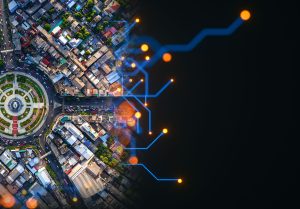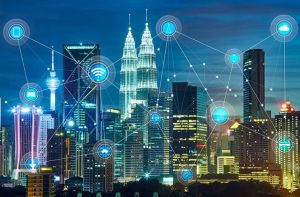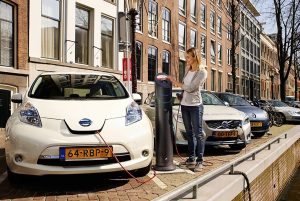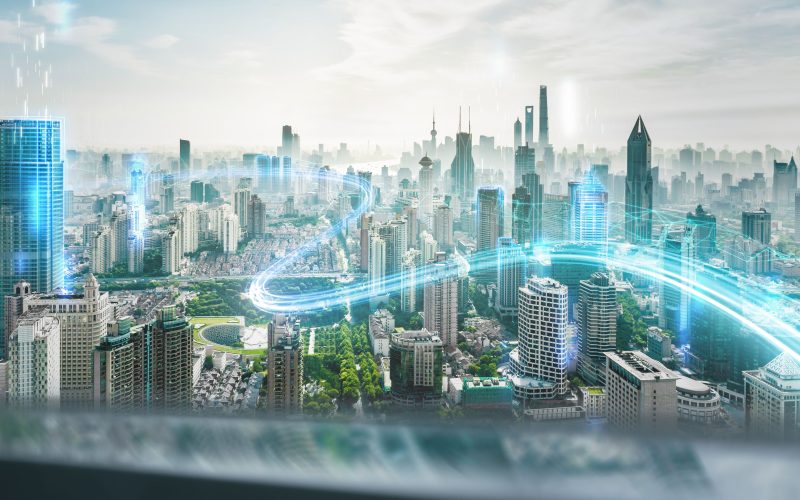As the world becomes increasingly urbanized, with more than half of the global population living in cities, there is a growing demand for smarter and more sustainable urban environments. This is where the concept of smart cities comes into play. The growth of smart cities is transforming how we live, work, and interact with our surroundings by integrating technology, data analytics, and the Internet of Things (IoT) to enhance urban living. From improving energy efficiency to enhancing public services and mobility, the influence of technology on urban life is undeniable.
In this article, we will explore the growth of smart cities, how technology is reshaping urban living, and the benefits it brings. We’ll also examine real-world examples and case studies of cities leading the charge in adopting smart solutions.
What Are Smart Cities?

A smart city uses digital technology and data-driven solutions to improve the quality of life for its residents while ensuring sustainability. The backbone of smart cities is IoT, which connects physical objects like traffic lights, security cameras, and even public transportation systems to the internet, enabling them to communicate and make data-driven decisions in real time.
A crucial feature of smart cities is their ability to collect, analyze, and use data to optimize city operations and resources. This often includes traffic management, waste management, energy distribution, and public safety. The result is an urban environment that is more efficient, sustainable, and livable.
The Growth of Smart Cities
The growth of smart cities has been fueled by several factors, including advances in technology, rising urban populations, and the need for more efficient use of resources. In particular, the widespread availability of 5G networks, cloud computing, and AI-driven analytics has made it easier for cities to implement and scale smart technologies.
According to recent studies, the global smart cities market is expected to reach USD 820.7 billion by 2025, growing at a compound annual growth rate (CAGR) of 14.8%. The growth is particularly rapid in regions like North America, Europe, and parts of Asia, where cities like New York, Singapore, and Tokyo have already established themselves as pioneers in the field.
Key Drivers of Smart Cities Growth
- Technological Advancements: The development of IoT, artificial intelligence, and machine learning has been a game-changer for smart cities. These technologies allow for real-time data analysis, predictive maintenance, and enhanced public services.
- Sustainability Goals: With increasing concerns about climate change, many cities are adopting smart technologies to reduce their carbon footprint. For instance, smart energy grids optimize power usage, while smart buildings reduce energy consumption through automation.
- Urbanization: The rapid growth of urban populations is putting pressure on existing infrastructure, necessitating smarter solutions to manage traffic, reduce congestion, and provide better public services.
- Public Safety and Security: Smart cities use advanced surveillance systems, facial recognition, and predictive policing to enhance public safety. These technologies allow law enforcement to respond to incidents more effectively and prevent crimes before they happen.
Benefits of Smart Cities
The growth of smart cities brings numerous benefits to both citizens and city administrations. Some of the most significant benefits include:
1. Improved Quality of Life
Smart cities use technology to enhance the quality of life for their residents. For example, smart healthcare systems can improve access to medical services by offering telemedicine options, while IoT-enabled public transportation systems reduce commuting times by optimizing routes and schedules.
2. Energy Efficiency and Sustainability
One of the primary goals of smart cities is to minimize their environmental impact. By using smart grids, cities can optimize energy usage, reduce waste, and promote renewable energy sources like solar and wind power. Smart buildings also play a critical role in reducing energy consumption through automated heating, cooling, and lighting systems.
3. Enhanced Mobility
Traffic congestion is a major issue in urban areas, but smart cities can alleviate this through the use of smart transportation systems. These systems leverage real-time data from sensors, cameras, and GPS to manage traffic flow and reduce congestion. Additionally, smart parking solutions allow drivers to find available parking spaces more quickly, reducing both frustration and pollution from idling vehicles.
4. Increased Public Safety
Smart cities utilize cutting-edge technologies to enhance public safety. Advanced surveillance systems equipped with AI can monitor public areas for suspicious activity, while IoT sensors can detect hazards like fires, flooding, or structural damage. These systems allow for faster response times and improved disaster management.
5. Efficient Resource Management
By using data to monitor and manage resources like water, electricity, and waste, smart cities can significantly reduce inefficiencies. For instance, smart waste management systems use sensors to monitor bin levels and optimize collection routes, reducing fuel consumption and operational costs.
Real-World Examples of Smart Cities

Several cities around the world have already embraced smart city technologies, demonstrating their potential to revolutionize urban living. Here are some of the leading examples:
1. Singapore: A Global Leader in Smart City Innovation
Singapore is often regarded as one of the smartest cities in the world. The city-state has invested heavily in IoT and AI to optimize various aspects of urban life. For example, its Smart Nation initiative uses real-time data analytics to manage traffic, reduce energy consumption, and improve public safety. Singapore also uses smart sensors to monitor water levels in drainage systems, preventing flooding in low-lying areas.
2. Barcelona: Pioneering Smart Infrastructure
Barcelona is another city that has been at the forefront of the smart city revolution. The city’s smart street lighting system uses sensors to adjust the brightness of streetlights based on pedestrian and vehicle activity, resulting in significant energy savings. Additionally, the city’s smart waste management system uses IoT-enabled bins to notify waste collectors when they are full, optimizing collection routes and reducing the environmental impact of waste management.
3. New York City: Enhancing Public Services with Data
New York City has embraced smart technologies to improve the quality of life for its residents. The city’s LinkNYC initiative provides free public Wi-Fi through kiosks located throughout the city. These kiosks also offer services like phone charging, access to city services, and real-time information on public transportation. Furthermore, NYC’s smart traffic management system uses data from sensors and cameras to optimize traffic flow and reduce congestion.
Case Studies: The Impact of Smart Cities
1. Smart Energy Grids in Copenhagen
Copenhagen has implemented a smart energy grid that connects households, businesses, and renewable energy sources to create a more efficient and sustainable power system. The grid uses real-time data to optimize energy consumption, reduce waste, and lower emissions. As a result, Copenhagen has made significant progress toward its goal of becoming carbon-neutral by 2025.
2. Smart Mobility in Amsterdam

Amsterdam has developed a comprehensive smart mobility system that uses data from connected devices to manage traffic, reduce congestion, and improve public transportation. One of the most notable features of the system is its smart bike-sharing program, which allows residents to locate and rent bikes using a mobile app. The city has also implemented smart traffic lights that adjust their timing based on real-time traffic conditions, reducing wait times and emissions.
Challenges Facing Smart Cities
While the growth of smart cities offers many benefits, it also presents several challenges that must be addressed:
- Data Privacy and Security: The collection and use of vast amounts of data raise concerns about privacy and security. Cities must ensure that personal data is protected and that systems are secure from cyberattacks.
- Digital Divide: Not all citizens have equal access to technology. To ensure that the benefits of smart cities are shared by all, cities must work to bridge the digital divide and provide affordable access to smart technologies.
- High Initial Costs: Implementing smart city technologies can be expensive. Cities must balance the high upfront costs with the long-term benefits of improved efficiency and sustainability.
Conclusion
The growth of smart cities is transforming urban living, offering a more efficient, sustainable, and livable environment. By leveraging IoT, AI, and data-driven solutions, smart cities are improving the quality of life for residents, enhancing mobility, increasing public safety, and promoting environmental sustainability. As more cities around the world embrace these technologies, the potential for smarter, more connected urban environments continues to grow.
However, smart cities must also address challenges like data privacy, security, and the digital divide to ensure that the benefits are shared by all. As technology continues to advance, the future of smart cities looks brighter than ever.










